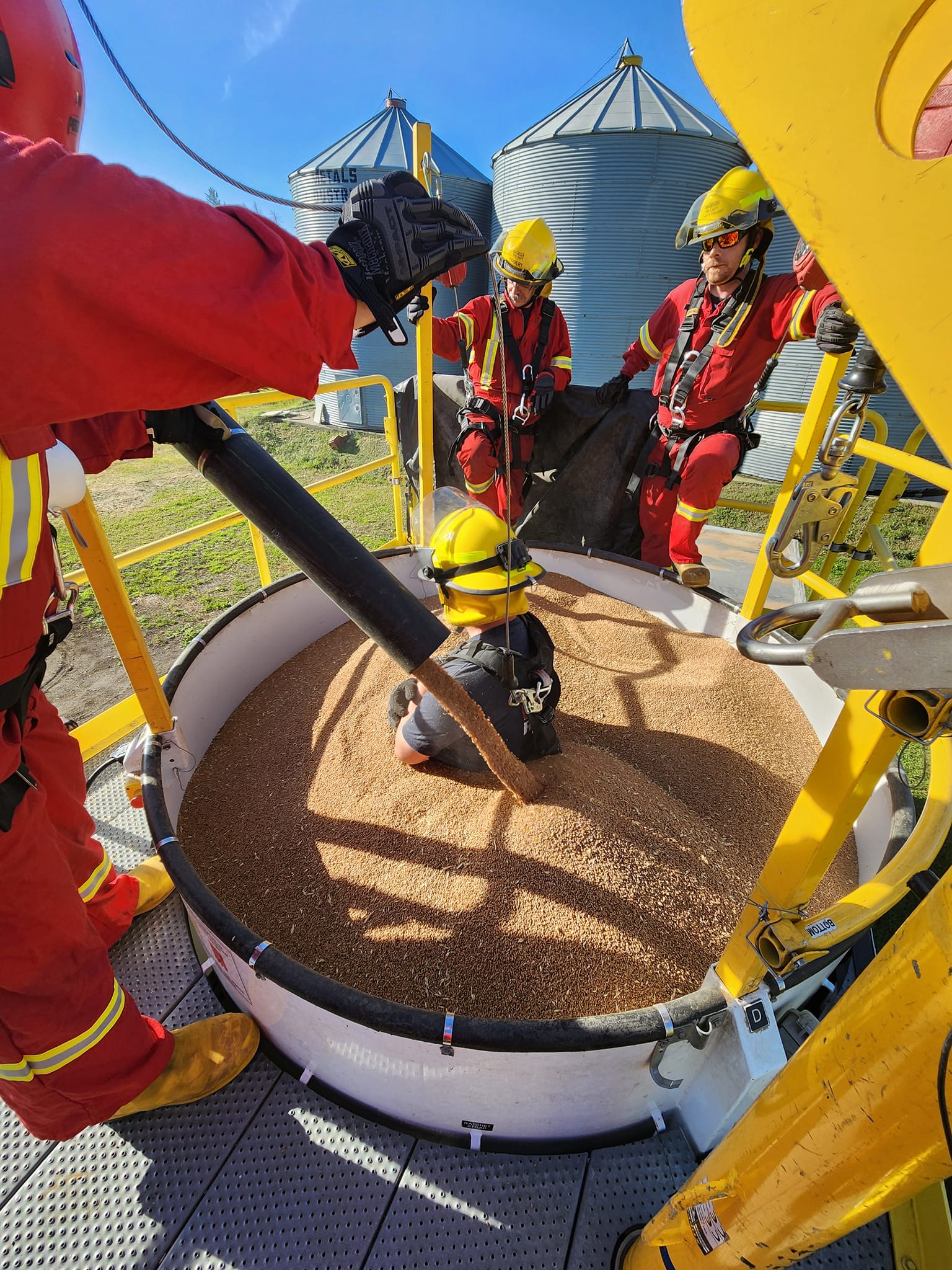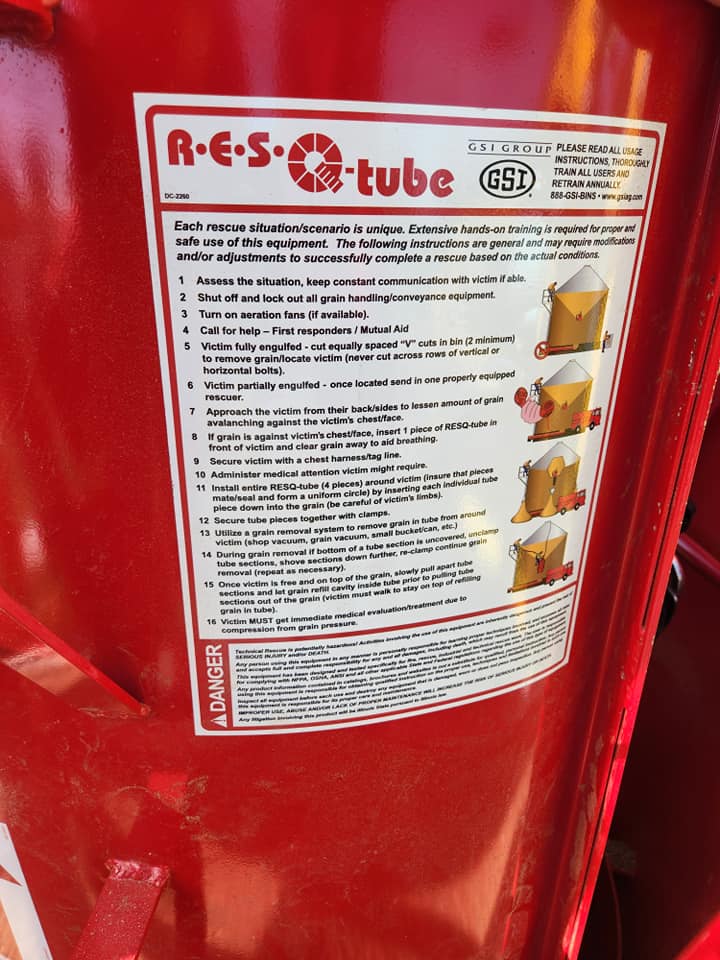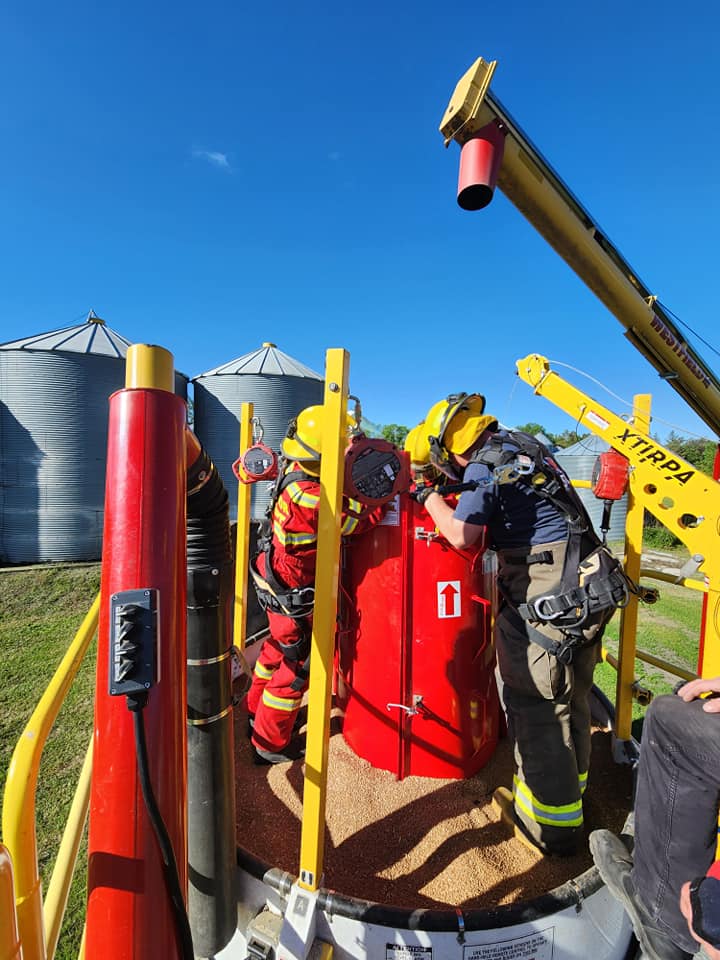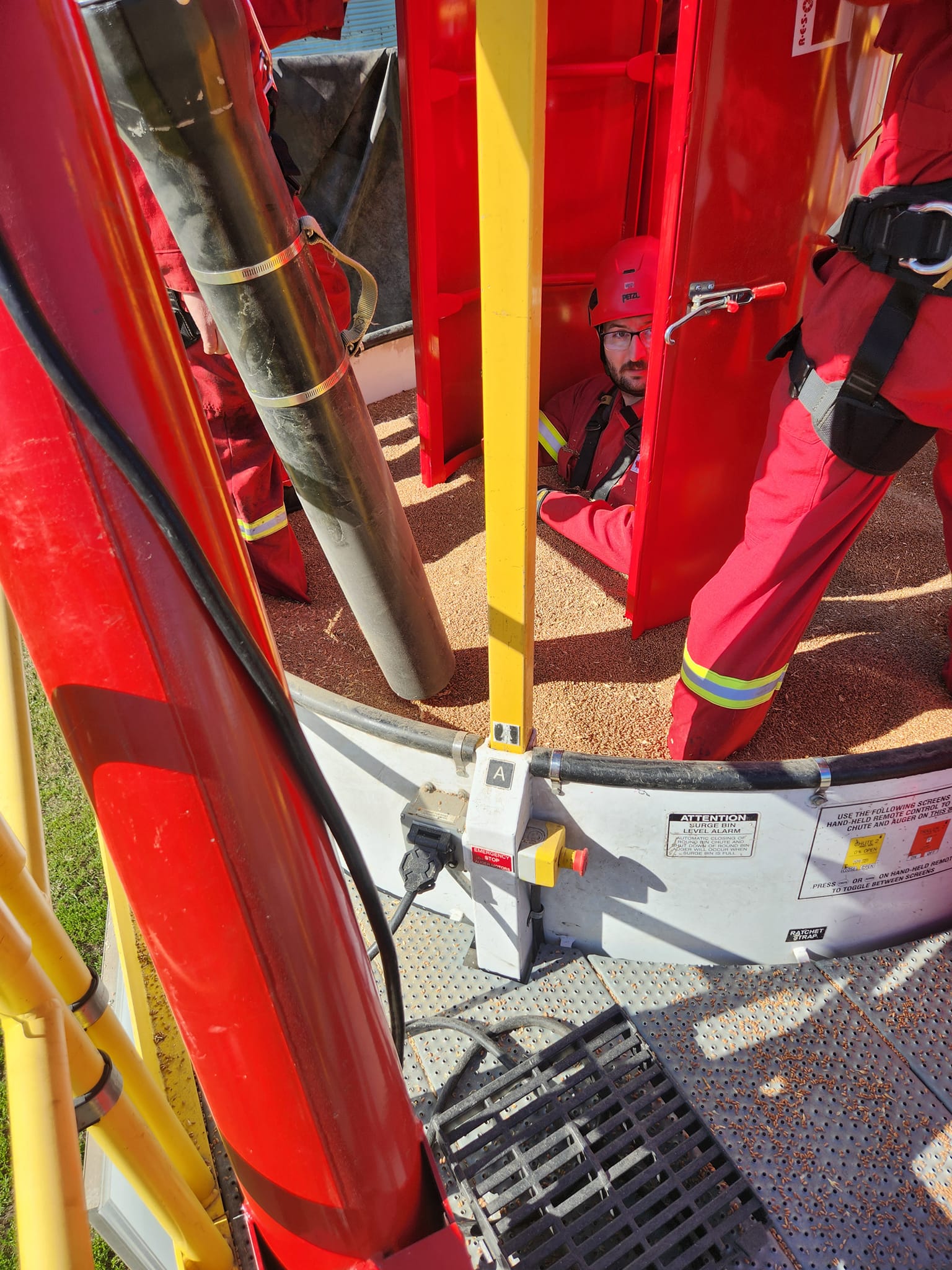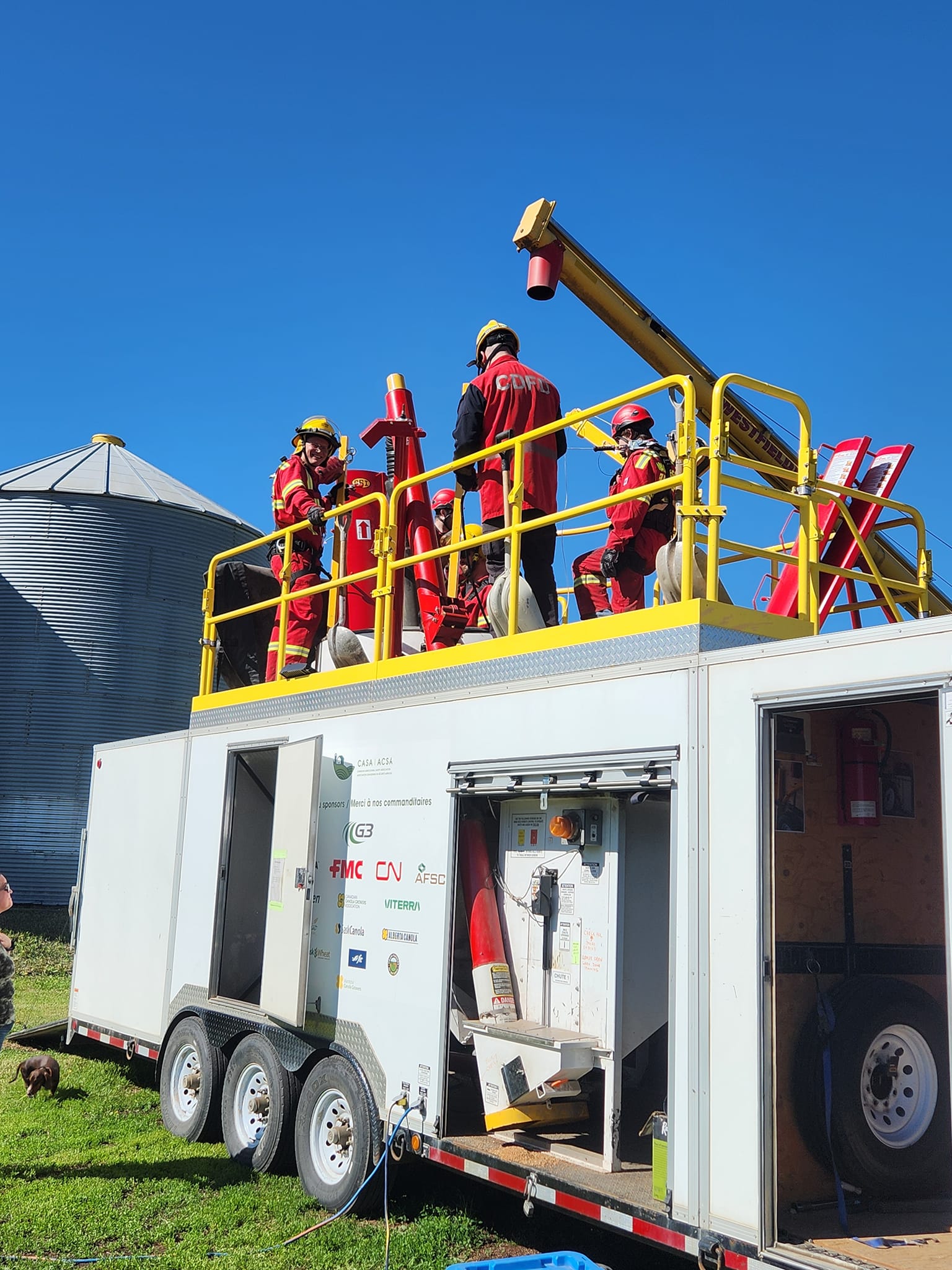Imagine the horror of being entrapped in a grain bin or grain truck where your knees are encompassed by grain. You cannot escape when grain reaches that level, and the grain is rising higher. Without help, there's no escape.
Statistics indicate that life-threatening grain bin encounters have seen more than 900 cases of grain engulfment reported with fatal results at a rate of 62 percent over the past 50 years.
In response, a grain bin rescue training session was a long time coming, and the MacGregor Fire Department recently hosted the event. Other firefighters, including some from the Portage la Prairie Fire Department, were present. Fire Chief Chris Leckie says G3 sponsored the entire course.
"They sponsored the equipment for us to house at our department for the mutual aid districts and area, and if Portage needs it, then we'll bring it and drop it to Portage with their crew and just help out that way."
 Fire Chief Chris Leckie
Fire Chief Chris LeckieHe says this part of the country has a serious need of firefighters trained for this specific rescue operation, seeing as grain bins are plentiful and can pose a hazard if someone becomes entrapped during their work on the farm.
"Everybody had to do a four-hour online course before doing the practical. It covers a lot of safety lessons and how you're supposed to perform the rescue. The practical was very informative for our guys. Everybody thought, 'Wow!' They've never had to do anything like that before, so I hope we never have to. But after we get the equipment, we'll be ready."
He explains CASA (Canadian Agricultural Safety Association) brought a trailer that included a grain bin with an open top on part of the trailer. The top is cut off from the grain bin. He explains they held the course at Snaith Farms which allowed them to use their property.
"We just auger 130 bushels into this grain bin, and you do your practical over and over. The firefighter would stand in the middle and the instructor would release the grain out at the bottom, causing the firefighter to sink up to chest height or waist height; whatever they're comfortable with. Then the equipment was there that we're going to be getting for the hands-on portion. You just encapsulate the person with these slides, and you slide them together. Then we have a little auger that fits down in the tube that you put around the individual, and you use a drill to run the auger. It shoots the grain out. Every time you shoot the grain out, you can slowly press the sides down. Eventually, the grain will get below their knees and then they can get out."
Leckie says when grain is over your kneecaps, you cannot escape. For this reason,, they remove grain with the auger until it is below a person's knees. He notes you never know what split-second decisions you have to make when an emergency can take place. A person can become trapped in a grain bin and what do we do in that situation?
"Having the tools and the education to know what we can do to help is imperative, especially in this area where we're surrounded by farm work, and bins get bigger and equipment is bigger. Hoppers are larger nowadays, and entrapment is a very high probability."
Leckie says he's never been involved in a rescue attempt for someone trapped in a bin, fortunately.
"It's always been one of those issues that we ask, 'What do you do if we do run into something like that?' I think the first thought on everybody's mind is to simply cut a hole in the side of the bin and get rid of the grain. You can do that and it does help in a quick situation, but the actual rescuing capabilities with minimal destruction and saving someone properly is the route we're supposed to go. It was a great education for our firefighters and the surrounding firefighters who came, helped, joined in, and made that day very successful."
Along with Portage la Prairie's team, Leckie hosted Eden Fire and Austin Fire. He says it was a good-sized group with 24 firefighters in total.
"Our instructor was out of Carman and he did an excellent job. It was good to spread out the opportunity to learn and we can take those experiences back to the various departments and explain to the others how it works. That's pretty important."
Leckie adds the equipment will be coming for their in-house access in the next couple of weeks.
"They'll be centrally located. Anybody who's required to use it can give a simple call and we get that on the road to where it needs to go. The equipment is in conjunction with the proper harnesses and ropes, so there are safety protocols you'll have to follow to get your rescue done properly. Most departments have all those capabilities already with training and equipment. So, this can be set up within minutes to what time you get there and assess the situation. The training shows how quickly you can get stuff set up. The know-how saves a lot of time."
G3 was a huge partner in the project. Leckie says he reached out to them after having read an article about how they had sponsored other fire departments. This resulted in sponsorship of the entire day of training and the entire online course, as well.
"Hats off to G3! And huge thanks to CASA for putting on the program. A huge shout-out to Snaith Farms for letting us use their location and grain that we used to put this on. So, it's a good partnership from everybody."





